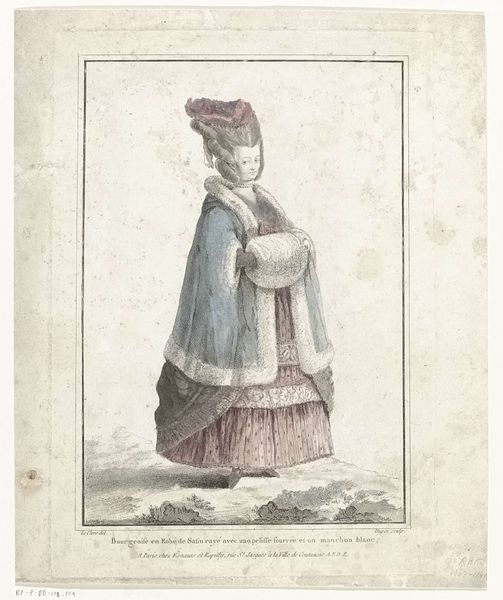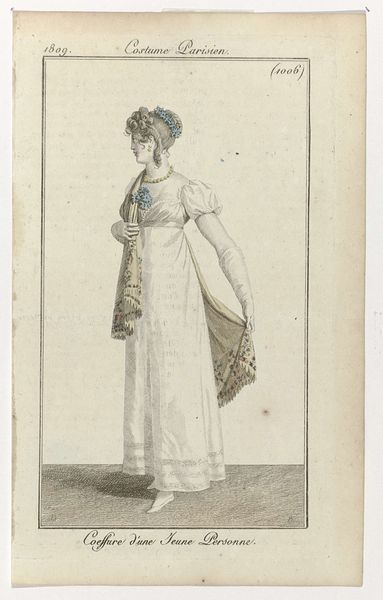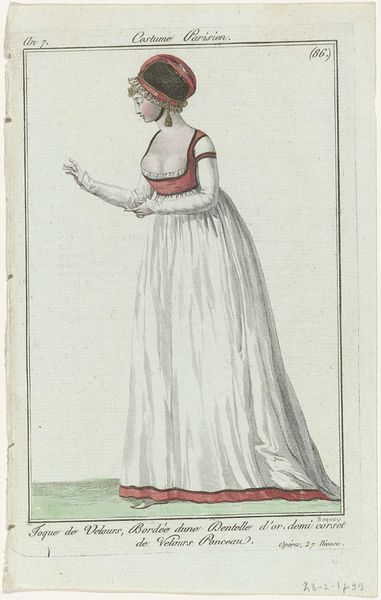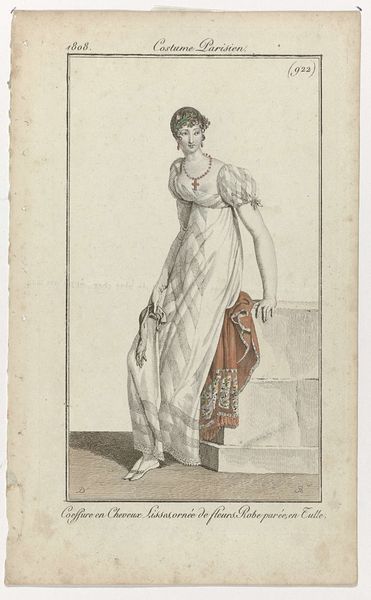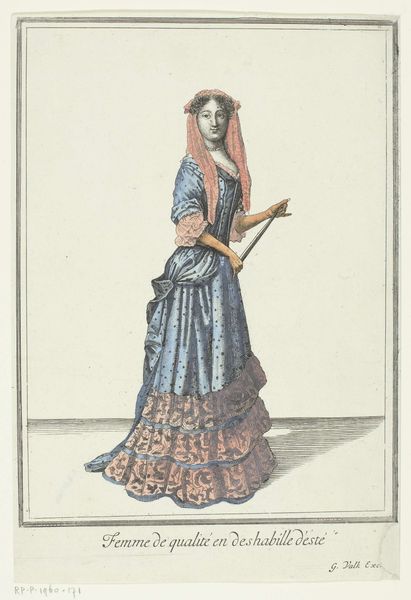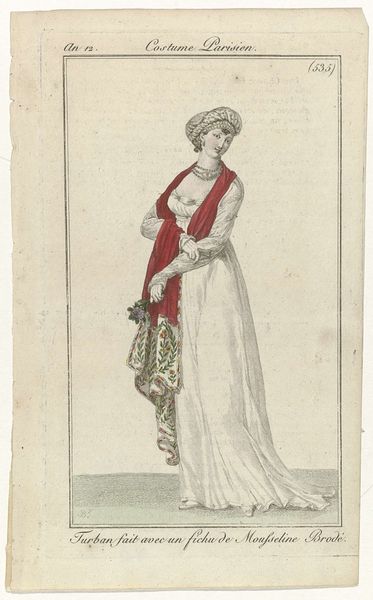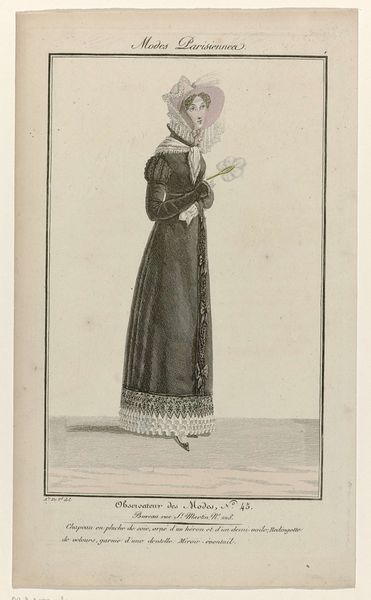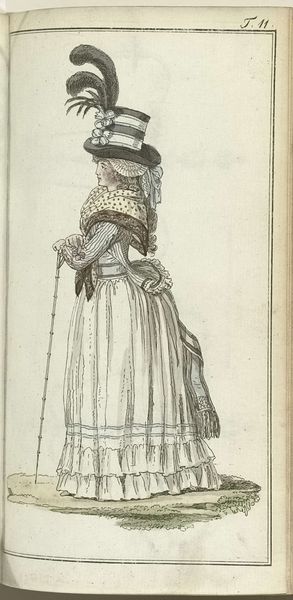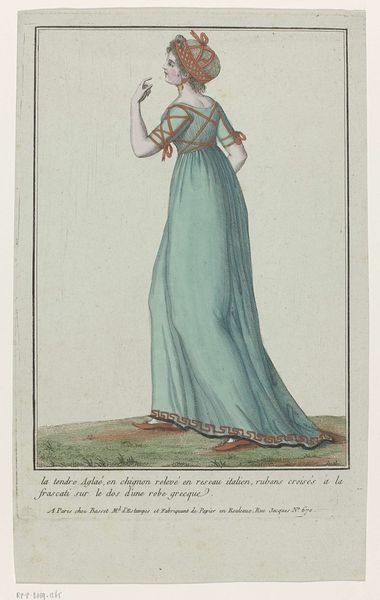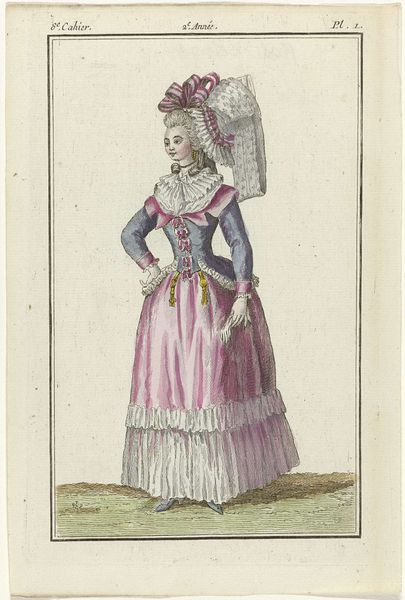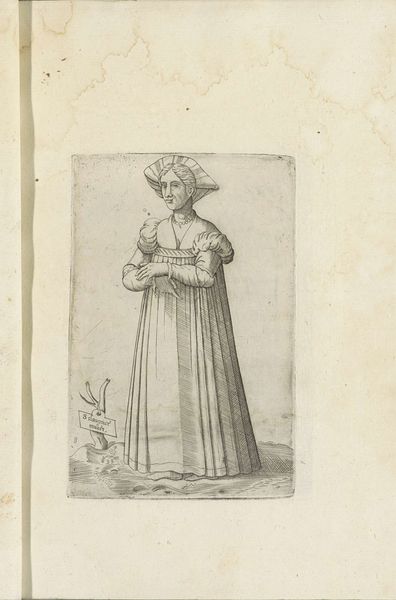
Costume Villageois de Mme Belmont dans Fanchon la Vielleuse, An 11, No. 2 1802 - 1803
0:00
0:00
watercolor
#
portrait
#
water colours
#
watercolor
#
coloured pencil
#
romanticism
#
watercolour illustration
#
genre-painting
Dimensions: height 180 mm, width 109 mm
Copyright: Rijks Museum: Open Domain
Editor: Here we have Pierre Charles Baquoy's "Costume Villageois de Mme Belmont dans Fanchon la Vielleuse, An 11, No. 2," created around 1802-1803. It’s a watercolor and colored pencil piece currently housed at the Rijksmuseum. The way the artist rendered the fabrics and the somewhat muted palette give it an ethereal, delicate feel. What elements of the composition stand out to you? Curator: The interplay of lines certainly catches my attention. Note how the verticality of the figure's stance is countered by the diagonal slash of the blue sash and the cascade of the white apron. These contrasting vectors animate the composition, preventing it from becoming static. Also observe how Baquoy employs hatching and cross-hatching to give form to the dress and particularly the shawl. This attention to texture using line creates depth, despite the work being fundamentally flat. Editor: I see what you mean about the dynamism and depth using lines. The framing helps accentuate the figure within. What would you say is its significance, and is that a structural part of its value? Curator: Indeed, the work is a system of interconnected formal choices. For instance, note the use of a border. The linear severity contains and highlights the organic flow of the costumery depicted within. Ask yourself, what purpose is served? I argue that it elevates it beyond mere documentation of rural attire, into something deliberately designed. A structuralist interpretation might emphasize how these visual binaries highlight underlying social distinctions. What do you think about the texture that comes through in the painting? Editor: Now that I examine it more closely, the texture is wonderfully tactile! It almost invites you to feel the fabric of the costume, even though it's just a visual representation. I think focusing on the compositional elements provides a great approach. Curator: Agreed. The close analysis of structure and form is vital, allowing us to perceive beyond the immediately representational aspects. Understanding how lines, forms, and composition work together creates a more profound appreciation.
Comments
No comments
Be the first to comment and join the conversation on the ultimate creative platform.
